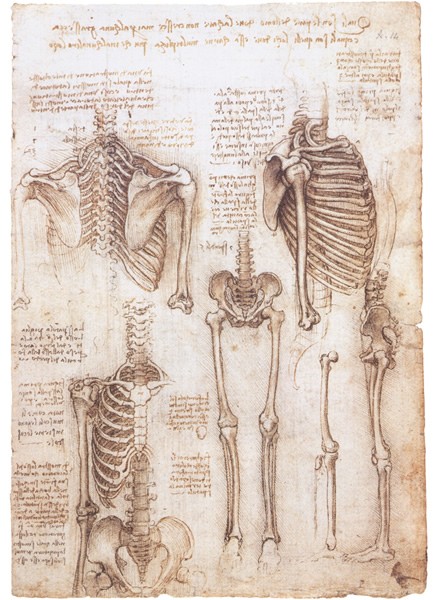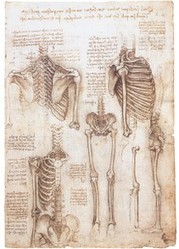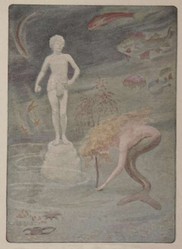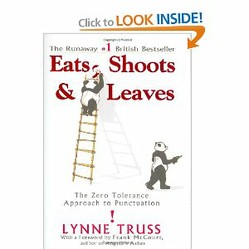
Grammar Tips -- Correlative Conjunctions
These grammar tips cover correlative conjunctions, which are simply words that are used together to join parts of a sentence. Examples are either or, neither nor, and both and.
What is a Conjunction?
A conjunction is one of the eight parts of speech. Conjuctions are words that join other words in a sentence. These other words can be groups of words that are called phrases and clauses.
Conjunctions act like the glue that brings like items together in a sentence. Some of the most common conjunctions follow:
- and
- or
- but
- either
- neither
Used alone, as just one conjunction, conjunctions appear like this in a sentence:
- Bill and Mary walked to school.
- Neither of us remembered to lock the door.
- I wanted to go, but Bill didn't.
The Knee Bone's Connected to the Leg Bone
 Conjunctions connect words, phrases, and clauses in a sentence. Dover Designs |
Correlative Conjunctions
Correlative conjunctions are conjunctions that are used in pairs in a sentence. Two conjunctions are always used. These two conjunctions "go together." The first conjuction introduces two or more things that will be connected, then the second conjunction connects them.
Correlative conjunction pairs follow:
- both, and
- either, or
- neither, nor
- whether, or not
- not only, but also
Here are some examples of correlative conjunctions in action:
- Both Frank and Fred will drive their cars. (These two correlative conjunctions, both and and, join two subjects in the sentence.)
- Either I'll buy oranges or bananas. (These two correlative conjunctions, either and or, join two nouns in the sentence.)
- Neither Bill nor Mary will attend the party. (These two correlative conjunctions, neither and nor, join two subjects in the sentence.)
- Whether Joe stays or goes, he has to let us know now. (These two correlative conjunctions, whether and or, join two verbs in this sentence.
- Not only does Fred work for Best Buy, but he also works at The Gap. (These two correlative conjunctions, not only and but also, join two clauses in the sentence).
More About Correlative Conjunctions
1. Remember that correlative conjunctions work together to connect words that have equal importance:
Both Jim and Ted ate pork chops. Frank ate steak.
The words both and and indicate that Jim and Ted did the same thing: They both ate pork chops.
2. Correlative conjunctions are always used as a pair (two conjunctions in one sentence).
3. Correlative conjunctions connect similar actions or things.
4. When two correlative conjunctions are used in a sentence where one subject is singular and one subject is plural, the subject that is closest to the verb in the sentence determines if the a singular or plural verb is used.
Sources:
Grammar and Composition, 1984. Houghton Mifflin English. Fourth Course.
Practical English and The Command of Words, 1966. The Better-Speech Institute of America.
Are You a Grammar Nerd?
Grammar Books
 | Conjunction Junction Riddles: 300 Grammar Puzzles to Boost Kids’ Sentence Power: Fun and Educatio...Independently published / Only $9.99 |
Conjunction Junction, What's Your Function
The tried and true song about conjunctions from Schoolhouse Rock
More Writing Tips
Active Voice Writing
Active voice writing brings words to life! The boys pulled the tree limbs. The tree limbs were pulled by the boys. Which of these sentences was written in active voice? If you chose the first one, you're the big winner.
Writers Guide to Getting Published: The First Five Pages by Noah Lukeman
This book is a must read for writers who want the truth about what it takes to get published.
More Wizzley Articles by Peggy Hazelwood
You might also like
Hans Christian Andersen - a few words on his originalityHans Christian Andersen is usually praised for his originality. Here are 10 n...
How to Use a CommaCommas and how to use them turn some people in knots. Yet when used correctly...






 Homophones -- Words That Sound the Sameon 10/22/2014
Homophones -- Words That Sound the Sameon 10/22/2014
 Erik Larson, Historical Nonfiction Authoron 10/16/2014
Erik Larson, Historical Nonfiction Authoron 10/16/2014
 Let a Digital Coin Bank Count Your Moneyon 07/23/2013
Let a Digital Coin Bank Count Your Moneyon 07/23/2013
 National Geographic for Childrenon 05/25/2013
National Geographic for Childrenon 05/25/2013



Comments
I love grammar, too -- I'd choose "The Elements of Style" over the juiciest novel. I have no idea why, but I guess that's just how nerds are...
But you're right. We all need a refresher -- or just to double check why something normal looks wonky suddenly, as you said. Sadly, some need a lot more help -- and I blame that on the stupid school system we have (not the teachers, the system). @ Stazjia: It seems the UK is not alone; they don't teach grammar here anymore either. Even when I was in 9th or 10th grade, the teacher felt she was a "timid editor" and didn't want to change (correct) our poetry or journals. In another English class we watched silent films and read newspapers. And I am 54, so that was a long time ago that this nonteaching started.
Love pages for grammar geeks!
Very useful tips for second language writers like me. Thanks
Here in the UK, it seems the rules of grammar are not taught to children anymore which is a shame.
Wow this is wonderful. I love your introduction with the bones. Cute cute cute :)
Wow, thanks, Evelyn! I appreciate your featuring this Wizzley!
Wonderful reference for conjunctions. This Wizzley is now featured on The Homeschool Club http://www.facebook.com/homeschool.club as there are many homeschoolers looking for clear, concise explanations about the parts of speach and this is one of the best I have found. :)
Grammar queens unite!
I was laughing when I saw the Title and immediately thought of the schoolhouse rock video, which of course I can sing, but not so sure I use conjunctions correctly in writing :)
Love my conjunctions! Love grammar for that matter.